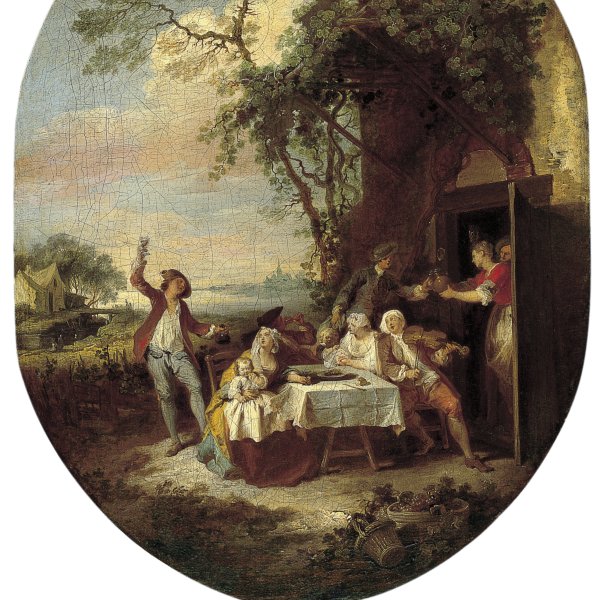Pierre-Antoine Quillard
París, c. 1704 -Lisboa, 1733
Pierre-Antoine Quillard was born in Paris around 1704 and died at a very young age in Lisbon in 1733. His life was short and it is difficult to give a full overview of his biography due to a lack of reliable facts about his existence. He must have been the son of a woodworker called Etienne (or Pierre) Quillard, who was born in 1673 and who died in Versailles in 1746. His name is sometimes confused with Guillard or Trillard, which causes doubt concerning his family origins and makes it difficult even to define his early home environment.
He probably trained in the circle close to Watteau, as can be deduced from the style of his work, which places him within the specific context of the fêtes galantes. On two occasions-in 1723 and 1724-he failed to obtain the Prix de Rome awarded by the Paris Académie Royale to travel to Italy and gained only second position behind François Boucher and Carle van Loo respectively. In his disappointment he accepted an invitation by the physicist Merveuilleux to accompany him to Portugal to draw the illustrations for his Natural History. By 1726 he was already a court painter and a draughtsman at the Academy. He painted festive genre scenes within the tradition of Watteau, who had died in 1721, for which there was great demand. He executed portraits of members of the Portuguese court, made prints and decorated the ceilings of the Queen's private rooms at the Royal Palace in Lisbon.
A number of paintings and drawings that are thought to be of his hand can be seen in different collections and museums, although very few of them can definitely be considered autograph, and a catalogue raisonné of his oeuvre is still to be completed. His style has a personality of its own, while it simultaneously shows a dependence on the creative formulae of Pater and Lancret.
Juan José Juna
He probably trained in the circle close to Watteau, as can be deduced from the style of his work, which places him within the specific context of the fêtes galantes. On two occasions-in 1723 and 1724-he failed to obtain the Prix de Rome awarded by the Paris Académie Royale to travel to Italy and gained only second position behind François Boucher and Carle van Loo respectively. In his disappointment he accepted an invitation by the physicist Merveuilleux to accompany him to Portugal to draw the illustrations for his Natural History. By 1726 he was already a court painter and a draughtsman at the Academy. He painted festive genre scenes within the tradition of Watteau, who had died in 1721, for which there was great demand. He executed portraits of members of the Portuguese court, made prints and decorated the ceilings of the Queen's private rooms at the Royal Palace in Lisbon.
A number of paintings and drawings that are thought to be of his hand can be seen in different collections and museums, although very few of them can definitely be considered autograph, and a catalogue raisonné of his oeuvre is still to be completed. His style has a personality of its own, while it simultaneously shows a dependence on the creative formulae of Pater and Lancret.
Juan José Juna







